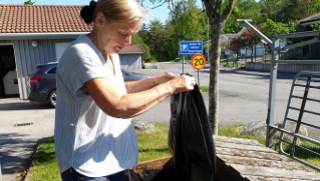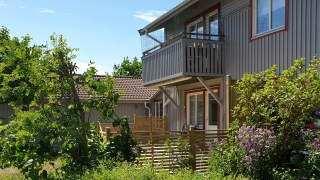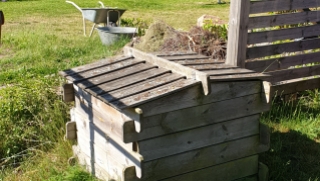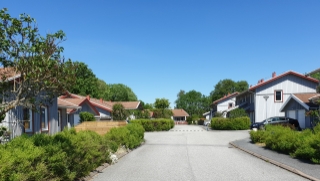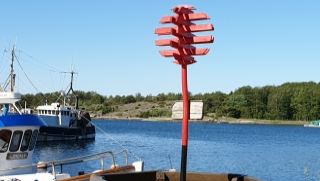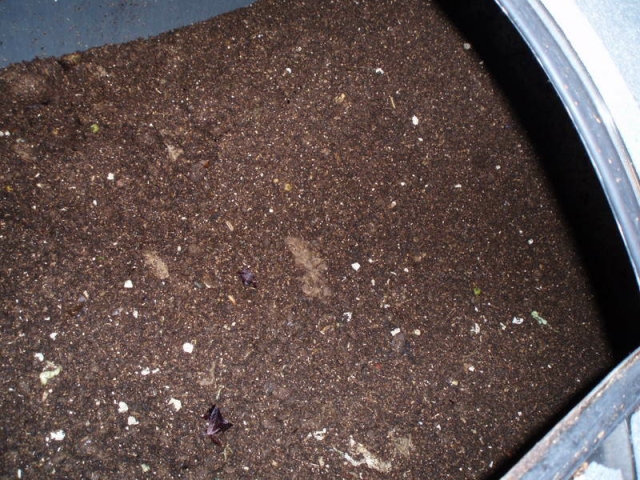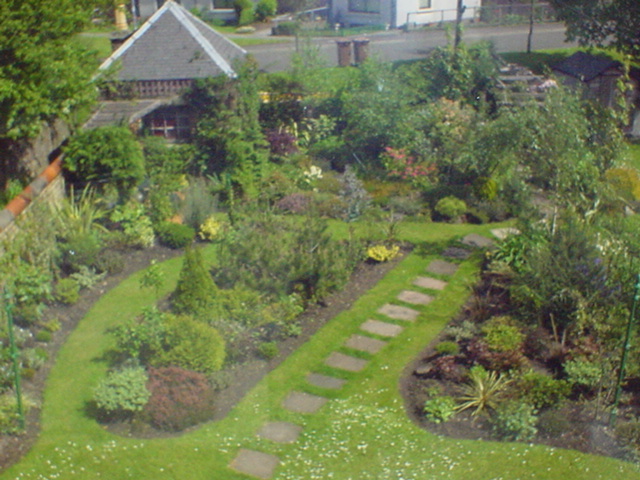24 years of composting food waste from 26 flats
For 24 years the residents in a housing area in a small fishing village on the Swedish west coast called Grebbestad, have composted their food waste with a Big Hanna composter. This Big Hanna was installed in 1994 and is the first generation of our model T40. In this tenant’s association there are 26 flats. The residential area consists of a few houses with apartments and the others are semi-detached houses. In the beginning all residents were very active and composted their food waste. After about 10 years the interest cooled down and only a few composted their food waste. Today when talking to the caretaker Ann-Katrin, she tells us that there has been a change in mindset again and today all residents are separating the food waste in their kitchen and brings it to the Big Hanna. They put the food waste into the composter themselves and when adding the food waste everyone also add a small amount of sawdust pellets. Ann-Katrin is the caretaker and she mainly keeps the area around the composter clean and empties the compost into the maturation box when needed.
The residents use the compost in their gardens. The maturation box is full in the early spring but end of spring it is all empty when everyone has taken the compost and used it in their gardens. The same happens in the autumn – the maturation box is full in the early autumn but when everyone has added the compost in their garden to improve their soil the maturation box is empty.
This is a fantastic example of practicing circular economy for many many years.
